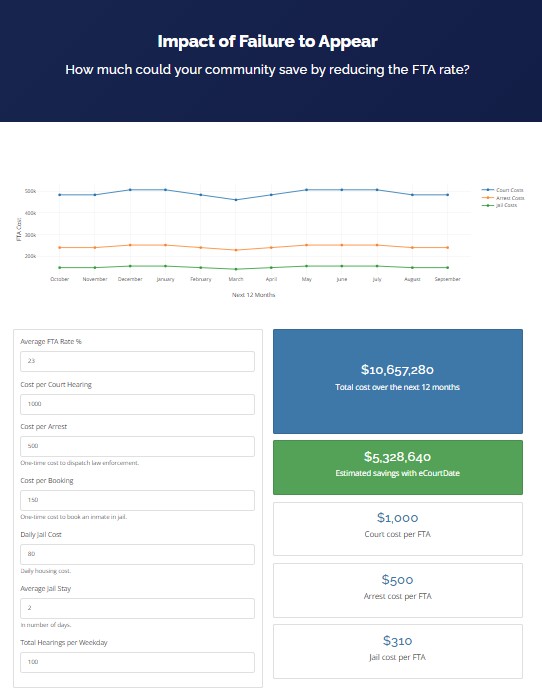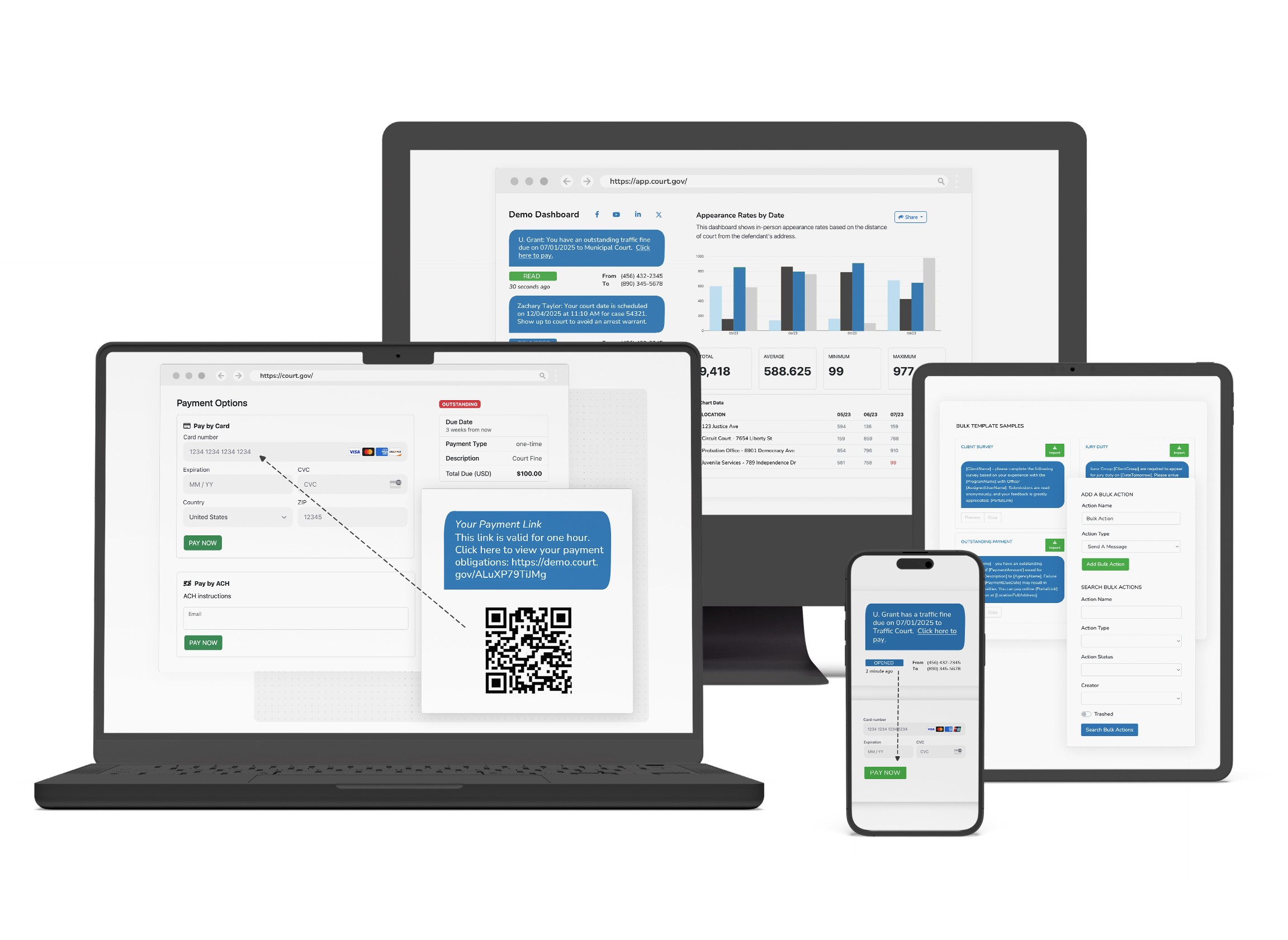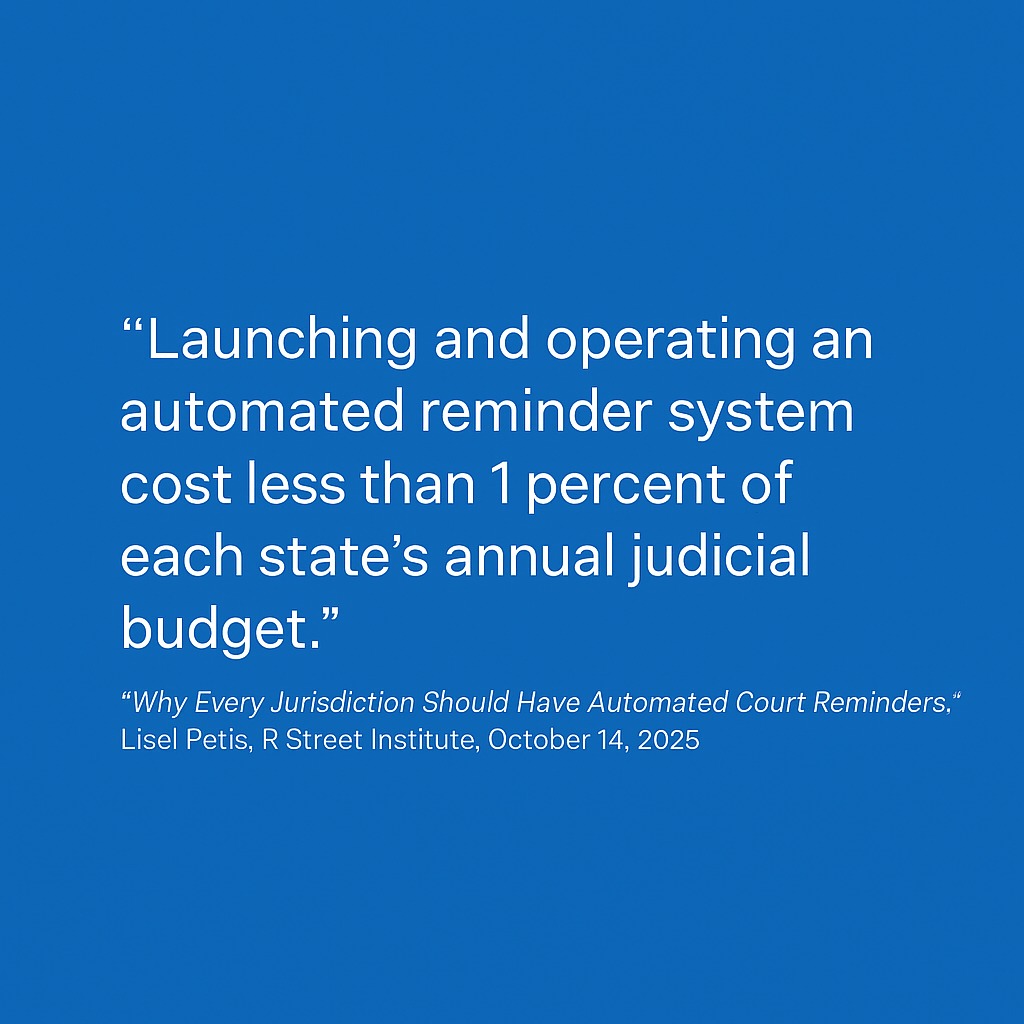The Call for Smarter Court Communication
In her recent commentary, “Why Every Jurisdiction Should Have Automated Court Reminders,” Lisel Petis of the R Street Institute highlights how simple, timely communication can make the justice system more effective and fair. She notes that most failures to appear are not caused by defiance but by everyday barriers such as forgetfulness, childcare, or transportation challenges. These small barriers often have big consequences for court operations and participants alike.
She is exactly right. Missed hearings cost courts and communities time, money, and trust. Automated reminders are a practical, evidence-based solution that reduces no-shows and strengthens public confidence in the justice process.
The Solution Already Exists
At eCourtDate, we are proud to partner with many of the jurisdictions Lisel Petis mentions. From Texas, where eCourtDate powers the statewide court reminder program, to jurisdictions across Colorado, New Mexico, Nevada, and Maryland, our platform is helping courts deliver the improvements R Street advocates for.
Our goal is clear: decrease missed hearings through fair, multilingual, and secure communication that reaches people where they are. These shared goals come through clearly in the way we design, implement, and support our reminder programs.
Aligning with R Street's Framework
Petis's article highlights the same best practices that influence eCourtDate's design and operations:
- Automatic enrollment with clear opt-out options. Courts engage more participants when reminders are set as the default. Our system offers opt-out transparency, comprehensive audit logs, and compliance with TCPA and state laws.
- Equity and accessibility. eCourtDate supports over 100 languages, accessible portals, and straightforward text-only communication, ensuring everyone is included.
- Cost efficiency. Automated reminders save substantial administrative time.
- Data privacy and security. eCourtDate is hosted in AWS GovCloud, with encryption, role-based access, and per-field auditing to ensure data is never misused.
Proof in Practice
Courts using eCourtDate consistently see double-digit drops in missed hearings. These results align with data from R Street, which reported 10 to 60 percent decreases in failures to appear after jurisdictions adopted reminder programs, with most experiencing a 20 to 40 percent decline.
In Texas, statewide participation continues to grow under the Court Reminder Program, with measurable decreases in warrants and more efficient dockets. The result is exactly what R Street called a "rare win-win" for courts, defendants, and taxpayers alike.
From Policy to Practice
We thank the R Street Institute and Lisel Petis for continuing to advance this conversation with thoughtful, evidence-based policy analysis. Their work reflects what we observe daily: automated reminders make justice more accessible and efficient.
At eCourtDate, we are proud to help jurisdictions turn recommendations into reality. Our agile, cost-effective platform provides courts with a fast path to compliance and measurable results without the overhead or complexity of legacy systems. The technology is available, the results are clear, and the opportunity is now.
To learn more about how eCourtDate supports statewide and local court reminder programs, visit https://ecourtdate.com/
Reference:
Lisel Petis, “Why Every Jurisdiction Should Have Automated Court Reminders,” R Street Institute (October 14, 2025). Available at: https://www.rstreet.org/commentary/why-every-jurisdiction-should-have-automated-court-reminders/


About Greg Shugart
Director of Government Relations
Greg Shugart brings over 30 years of public sector experience to the eCourtDate team, with a background in court administration, criminal justice reform, and government operations. He previously served as Criminal Courts Administrator for Tarrant County, Texas, where he led statewide-recognized initiatives in pretrial modernization, court communications, and system efficiency. Greg now contributes to eCourtDate’s strategy and partnerships, helping agencies implement technology that improves access, compliance, and trust in the justice system.

